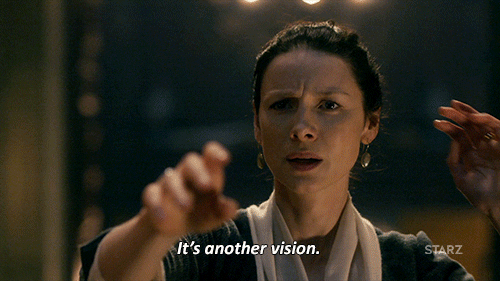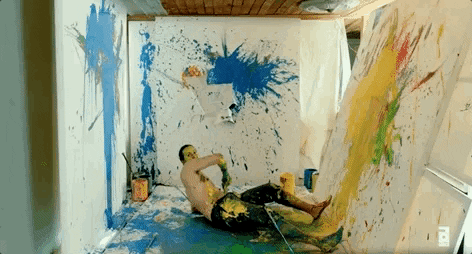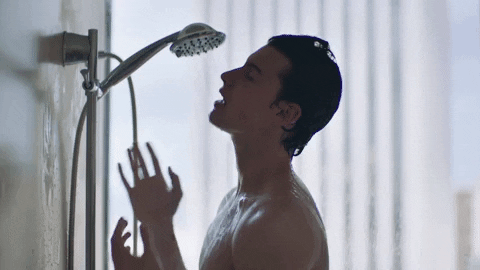You are at your workstation, pen in hand, the scent of freshly brewed coffee lingering, but the screen remains blank.
The struggle to get the words down continues but to no avail.
What am I doing wrong? Why are the ideas not flowing today? Where has my muse gone?
Then you power through to write a paragraph, but it sounds bland and uninspiring. At this point, you realize you won’t be getting anything done in the next few hours.
If you have experienced this writer’s block or stagnation in creativity, I am here to reassure you that you are not alone in this rut.
But if you want to rekindle your creative flame, here are writing exercises to boost your creativity at home, school, or work.
1 — Visualize the problem

Let’s say you are struggling with an essay prompt or article topic; the first thing to do is to write it down on paper or word processor.
Keeping the ‘problem’ in plain view helps you narrow down your focus and eliminate distractions.
By pinpointing your attention to the topic, you can channel your energy — and other available resources — to solving the problem.
If you don’t highlight the primary obstacle, your brain will struggle to identify and prioritize it. And when your mind is racing through 100 mazes simultaneously, your overall creativity suffers.
2 — Practice free writing
Nowadays, writers can boost their creativity by engaging in writing games. Some of the popular ones include 5-minute creative writing exercises, puzzles, and writing without certain letters.
However, freewriting is the best way to regain your creative buzz.
Freewriting involves putting down your thoughts without any inhibitions or direction. Just choose a random topic — unrelated to the elephant on the screen — and write.
Think of it as a flow of consciousness; you just need to record anything that comes to your brain during the exercise.
Besides, a Duke study showed that freewriting improves cognitive abilities. And when combined with handwriting exercises, freewriting can immerse you in the process and help you reconnect with your creative side.
So, grab your writing pad and scribble away.
3 — Explore art

What’s art got to do with writing?
Here is the thing; all creative activities affect similar parts of the brain. And sometimes, you just need to stimulate the brain with other activities, like doodling and painting.
Besides, these standard creativity exercises help artists to generate ideas.
So when you are struggling to revitalize that character or jazz up that sloppy paragraph, slam that laptop shut and pick up your drawing pad.
You can also download creativity drawing exercises on your devices for easy access when the creative juices ebb.
4 — Harmonize your favorite songs
Listening to music improves your creativity when writing, but it all depends on the volume and genre.
Most people prefer instrumentals and classical music. I’d often add a bit of nu-jazz and funk to the mix.
If you have a writing playlist, it’s time to pull up the lyrics and sing along. But don’t just sing along; immerse yourself in the lyrics and pay attention to the story.
Some of these songs have sparkling gems that can illuminate you with ideas. Others can just stimulate you to write better.
At the same time, resist the urge to play one song on repeat. Try your best to diversify your listening experience and break the monotony.
You can also use noise-cancellation headphones to get lost in the music.
5 — Watch a movie
Remember that movie or TV show you’ve been putting off? You might as well watch it now.
Who knows? An hour-long sprint on Nolan’s mind-blogging classics or Tarantino’s bloodlust epics could re-ignite your bulb.
If you don’t want to go down the Netflix rabbit hole, you can watch a documentary related to the topic you are writing about.
By doing so, you will get the chance to explore the topic from a different perspective — with visuals to help you grasp the gist.
6 — Hit the showers

Why do we think better in the shower?
You’ve noticed that too, right? The craziest thoughts come to me whenever I hit the showers. In fact, I ruminate daily on new concepts under the cozy blanket of a warm mid-day shower.
And I am not alone on this; scientists have explored this “shower thoughts” phenomenon, and here is what they think:
- Taking a bath or shower releases dopamine that helps the brain to relax
- Showering eliminates distractions
- Water rejuvenates your brain
So, why not try it out?
When next you shower, choose a topic and think about it as the water runs down your back. Then, write down your thoughts once you step out and see if this technique works.
7 — Sleep on it
Fatigue can hinder your creativity as a writer. Sometimes, this single factor can lead to burnout and eventual writer’s block.
So when you are tired, don’t deny yourself a quick nap because sleeping is one of the writing exercises to improve writing.
That said, sleeping at work or in a coffee shop might endanger your career and personal safety. Your boss won’t find it funny when they catch you nodding off at your desk.
So, you need to plan your naps to fall outside work hours.
And that’s why you need to figure out your creative hours, especially when you work from home.
When you are struggling to provide quality work, allow the brain to recover by taking a quick shut-eye.
8 — Meditate

Distractions contribute to a lack of creativity in writing. And that’s why you need to blot out the noise around you.
If noise-canceling headphones and concentration apps can’t re-spark your creativity, you need to try meditation.
Nowadays, mediation is one of the most valuable creativity exercises for students in college. Similarly, professional content and creative writers can also meditate when they are struggling with creativity.
The Creative Penn recommends meditative writing as a remedy to waning creativity. Essentially, you can use this technique if freewriting and cognitive writing don’t work for you.
Also, apps like Headspace can help you develop a foolproof meditation practice.
9 — Take a walk
Nothing beats stepping away from the desk to get some fresh air.
When I am struggling to choose the picture-perfect preset on Lightroom, I always create two versions of the same picture and take a walk.
Afterward, I review the results with a clear head to make a better decision.
And this technique has helped me in my writing practice too. Anytime I get stuck on a page, I just go out for a pint or walk around the block.
Instead of staring into the vacuum and torturing yourself in front of the screen, peel away from the desk.
Grab a bite at the deli, go for groceries, feed the cat, or walk the dog — just change your scenery.
10 — Meet other writers
Being part of a community of writers can help you when the ideas stop flowing. Your colleagues can pull you out of the rut by offering their POVs and useful advice.
But the interaction doesn’t have to be about writing every time. You can just discuss other significant topics to feel a part of the community.
Conclusion
Creativity is a valuable tool in every writer’s arsenal. So, you need to keep ideas fresh and exciting to avoid the creative rut.
Try freewriting and meditative writing to revitalize your thinking. You can also take a shower or sleep on your ideas.
Also, don’t hesitate to change your scenery and interact with others. And ultimately, use music and visual arts to jolt the brain back into creative action.
Use these creativity exercises for adults and students to pull through those barren spells.
Who wrote this?
As the owner and editor of SomebodySays, Ugo Ezenduka shows readers the fundamentals of content writing and blogging to help them adapt to the ever-changing landscape.
He has collaborated with several IT and publishing companies to create articles and blog posts that customers crave. When he is not in front of a screen, Ugo can be spotted somewhere with a camera or on a football pitch.




